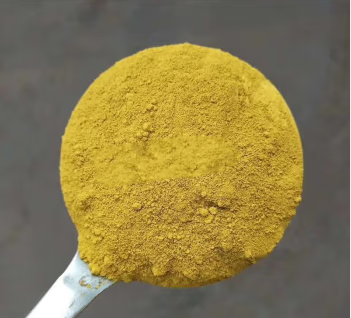Calcined zinc oxide products have become an essential component in the ceramics industry due to their unique properties and wide range of applications. These products are used in various forms such as pigments, fillers, stabilizers, and refractories. As a result, they play a crucial role in determining the quality and performance of ceramic products. However, understanding the pricing of calcined zinc oxide products can be challenging for ceramics manufacturers. This article aims to provide a comprehensive analysis of calcined zinc oxide products, their prices, and factors influencing them in the ceramics industry.
Calcined zinc oxide is produced by heating zinc oxide at high temperatures until it reaches a stable form. This process improves its chemical stability, color intensity, and other physical properties. The resulting product is commonly used in ceramics due to its ability to enhance the strength, durability, and appearance of ceramic materials. It is also used in paints, plastics, rubber, and other industries.

The pricing of calcined zinc oxide products depends on various factors, including the quality of the raw materials, production processes, market demand, and supply chain dynamics. The following are some key factors that influence the pricing of calcined zinc oxide products in the ceramics industry:
1. Quality of raw materials: The quality of raw materials used in the production of calcined zinc oxide products plays a significant role in determining their prices. High-quality raw materials generally result in higher-quality products, which are more expensive. Therefore, ceramics manufacturers should ensure that they use high-quality raw materials to produce high-quality calcined zinc oxide products.
2. Production processes: The production processes used to manufacture calcined zinc oxide products can also affect their prices. More advanced and efficient production processes generally result in higher-quality products, which are more expensive. Therefore, ceramics manufacturers should invest in advanced production technologies to produce high-quality calcined zinc oxide products at competitive prices.
3. Market demand: The demand for calcined zinc oxide products in the ceramics industry can significantly impact their prices. When there is high demand for these products, their prices tend to increase due to limited availability. On the other hand, when there is low demand, their prices tend to decrease due to increased competition among manufacturers. Therefore, ceramics manufacturers should monitor market demand to adjust their pricing strategies accordingly.
4. Supply chain dynamics: The supply chain dynamics of calcined zinc oxide products can also affect their prices. When there are disruptions in the supply chain, such as transportation issues or raw material shortages, the prices of these products may increase. Therefore, ceramics manufacturers should ensure that they have reliable supply chain partners to minimize disruptions and maintain competitive prices.
5. Currency exchange rates: The pricing of calcined zinc oxide products can also be affected by currency exchange rates. When the value of the domestic currency decreases relative to foreign currencies, the prices of imported raw materials and products may increase, affecting the overall pricing of calcined zinc oxide products in the ceramics industry. Therefore, ceramics manufacturers should monitor currency exchange rates and adjust their pricing strategies accordingly.
In conclusion, understanding the pricing of calcined zinc oxide products is essential for ceramics manufacturers to remain competitive in the market. The pricing of these products depends on various factors, including the quality of raw materials, production processes, market demand, supply chain dynamics, and currency exchange rates. By considering these factors and monitoring market trends, ceramics manufacturers can adjust their pricing strategies to remain competitive and profitable in the ceramics industry.